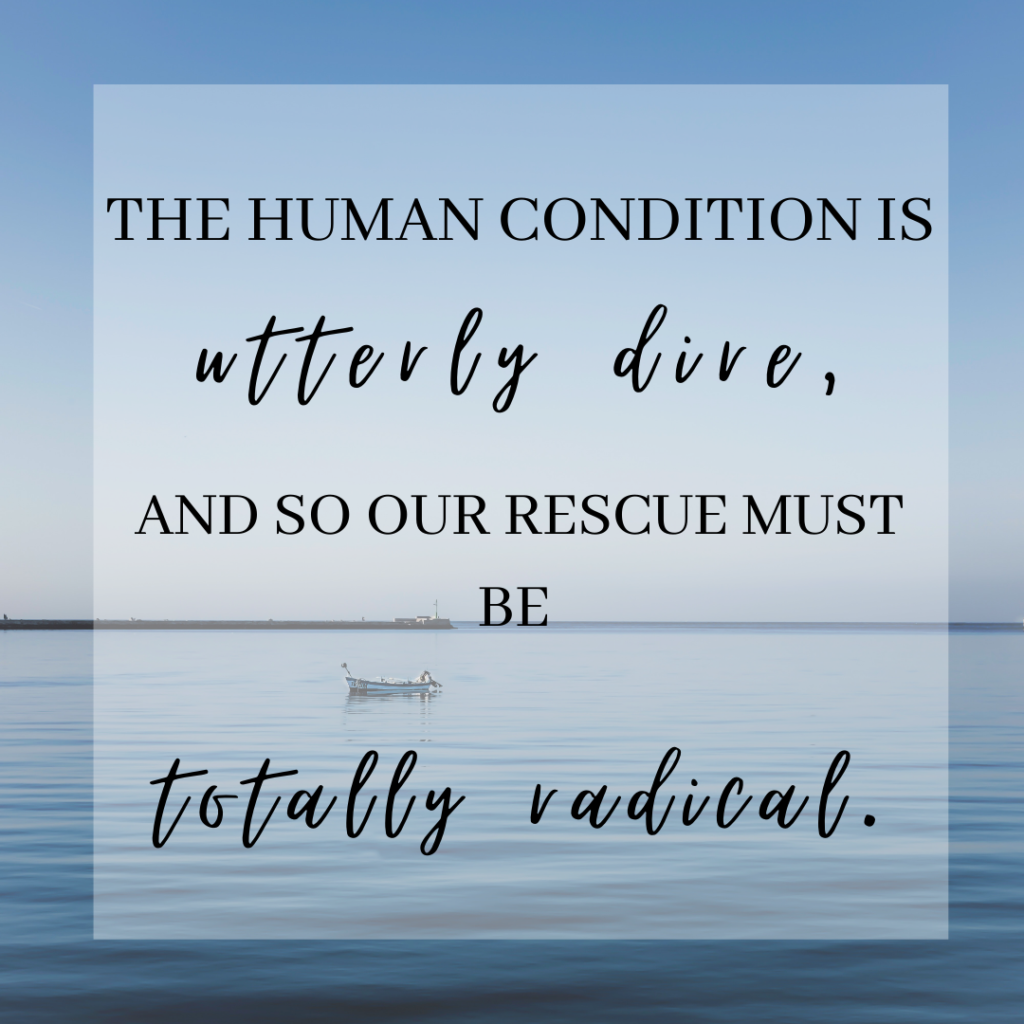Imagine a beautiful mountain lake – flat and crystal clear with mountains rising all around. You’re out on this lake in a boat with friends enjoying the day. Now, let’s say this picture describes the human condition.
There’s just one thing: all religions, worldviews, and philosophies agree there is something wrong with humanity and the world. So, to give us a more accurate picture of the human condition, let’s say the boat capsizes and you and all the people are left treading water, struggling to stay afloat, on the verge of drowning. It is a huge lake, the shore is really far away, and even the strongest swimmer can only hold on so long. A sad picture, but true.
What do various perspectives say about our situation?
- Secular Materialism – Just find a log to float on, see if someone can pass you a drink, and enjoy the view while it lasts!
- Secular Humanism – You need to work together with the other people in the water and- by the good of the human spirit- stay afloat, and maybe even swim to shore.
- Traditional Religion – Our problem is we’re just not strong enough swimmers. What we need is an instruction manual to teach us to swim better. We either need a manual to drop from heaven or a spiritual leader who can throw us an instruction manual from the shore. Then, once we read about how to swim, we can practice the proper strokes, work on our form, and swim to shore.
- Humanistic Christianity – This is similar to other religions, except it highlights the role of Jesus. Jesus is the only one that can give us the instruction manual. He came from God; he is our teacher. In fact, we can even look to Jesus on the shore to coach us. And if you are a really bad swimmer, call out to Jesus and he will even throw you a rope – as long as you are showing some effort.
The reality is that none of these approaches work, because the scene on the lake doesn’t adequately describe the severity of the human predicament. It’s too late for coaching and swim lessons. Even if Jesus came down and threw us a rope with a life ring, we couldn’t hold onto it while he pulled us in. The human condition is utterly dire, and so our rescue must be totally radical.

Actually, the most accurate way to describe our spiritual condition is not that we are drowning in the lake, but that we are dead at the bottom of the lake. We need to be rescued, delivered from death. Jesus didn’t come to give us swimming lessons. He doesn’t coach us from the shore. He doesn’t throw us a rope. He dives into the lake, swims down to the bottom, pulls us to the surface, hauls us to shore, and by his supernatural work of dying on the cross and rising from the grave – he brings us back to life!
Ephesians 2 describes our dire spiritual condition as being dead in our trespasses and sins, but God planned a miraculous rescue:
“But God, being rich in mercy, because of the great love with which he loved us, even when we were dead in our trespasses, made us alive together with Christ – by grace you have been saved – and raised us up with him and seated us with him in the heavenly places in Christ Jesus, so that in the coming ages he might show the immeasurable riches of his grace in kindness toward us in Christ Jesus. For by grace you have been saved through faith. And this is not your own doing; it is the gift of God, not a result of works, so that no one may boast.” (Ephesians 2:4-9)
The Christian Gospel is all about God’s grace! We are forgiven of our sins, rescued from the bottom of the lake, made righteous, given life, loved by God, and adopted into his family. We receive this salvation by the grace of God, through faith, not by works. We are saved by the plan of the Father, the work of the Son, and the power of the Spirit – by grace alone, through faith alone. This is the good news of our miraculous rescue!
